Kemon achhen!
Posted by Amna Singh on August 02, 2018Team StoryWeaver was in Kolkata in June for our second Translation Hackathon (you can read all about our first one here). 15 volunteer participants, a healthy mix of teachers and language students, came together to version more than 40 stories in Bangla over one weekend. The goal of the hackathon was to facilitate not only the translation of level 1 and 2 book to Bangla, but to also ensure peer led reviews of the translations.
We reached out to Sudeshna Moitra, a language teacher with over 34 years to help us not only find and bring together enthusiastic participants, but to also facilitate the workshop and mentor the volunteers. Sudeshna Ma’am has written 'Banan Tanan' a tome used by many Bengali writers. She writes for a number of Bengali blogs, and is also the editor of Sahajpath. As a resource person in Alamin Mission she organises training workshops for teacher on language teaching.
Sudeshna Ma’am believes that “Translation of stories helps to transmit thoughts into other languages, breaking the barrier of geographical distance, religion, and culture.”
The hackathon opened with a warm introduction and Sudeshna Ma’am set the agenda for the two day hackathon. Participants were familiarized with the Pratham Books mission and the power of open licenses. Rajesh Khar, Pratham Books Editor, spoke about the nuances of translating for children, levelled readers and also exposed them to the best practices followed by our team of Language Editors. Rajesh ensured that the participants - language students and teachers working with the children from underserved communities - had much clarity to the end goal of weaving quality books that were freely accessible for the last child.
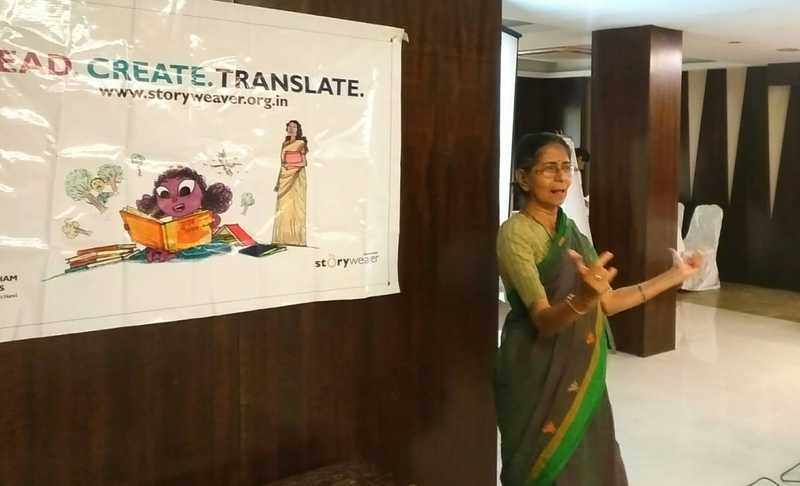
Sudeshna Moitra sets the agenda for the workshop.
“We had curated a list of stories that we wanted to see translated through the workshop. These were level 1 and 2 stories published by Pratham Books, BookDash, ASP and the StoryWeaver community. We assigned the stories to each participant before the workshop keeping in mind their particular strengths. They were asked to read each story a few times to familiarise themselves with the story and it’s nuances. But the idea was for also for them to tap into the collective learnings and energy of the group to weave their translations.” shared Amna Singh, Associate Language Editor, Pratham Books.
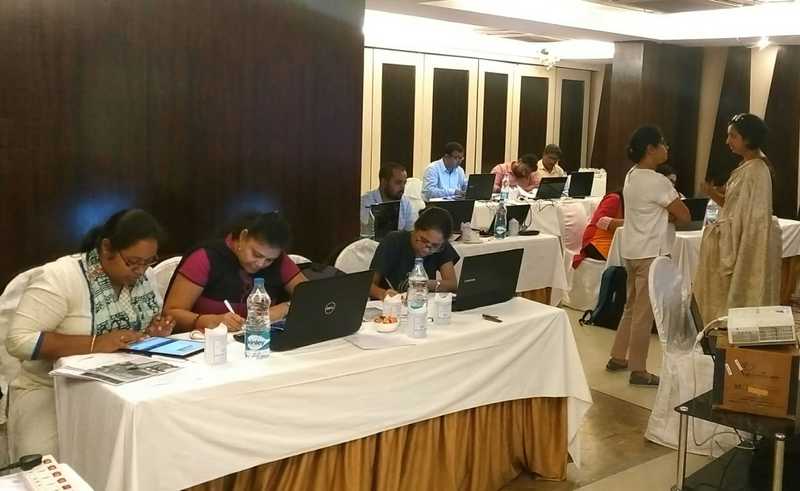
Participants busy translating
One of the participants, Suman Das, a Head Master Of Chalitatali Prathamik Vidyalaya of Nadia said that once the clock started ticking the participants gathered speed and completed half their allotted books before lunch. Once they had translated the stories Sudeshna Ma’am reviewed each and every story with some receiving a green signal to publish. After lunch, a discussion on the need for level appropriate words in translation was had. “Some of us, including myself used some words which weren't appropriate for the age group the stories were intended for.” shared the Head Master.
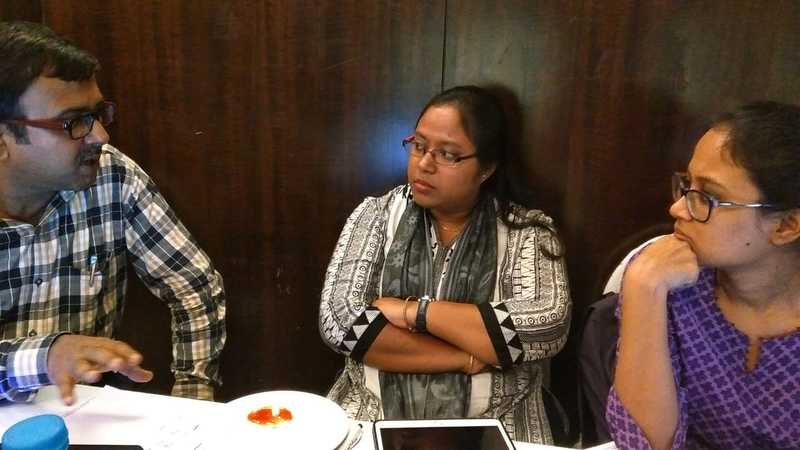
Discussions and healthy debates
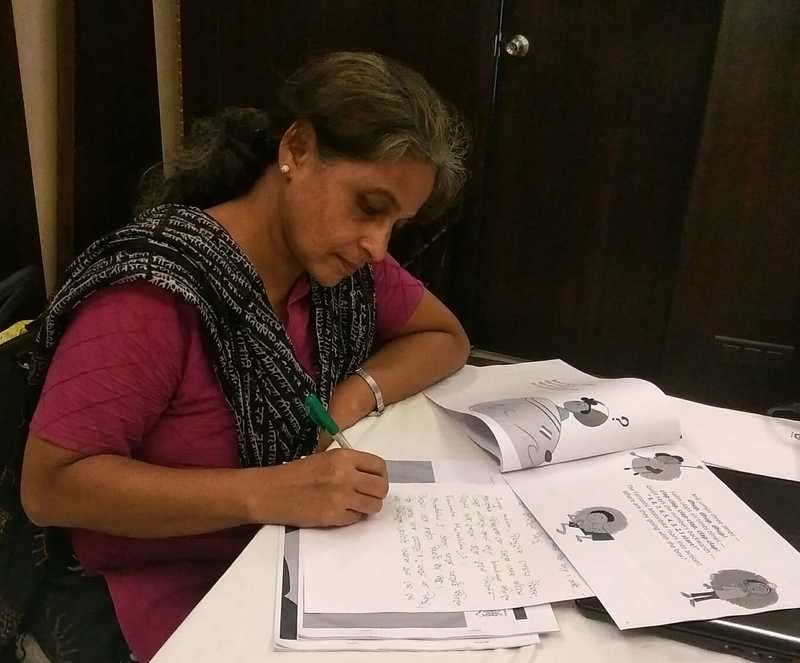
Peer -to-peer review of translations
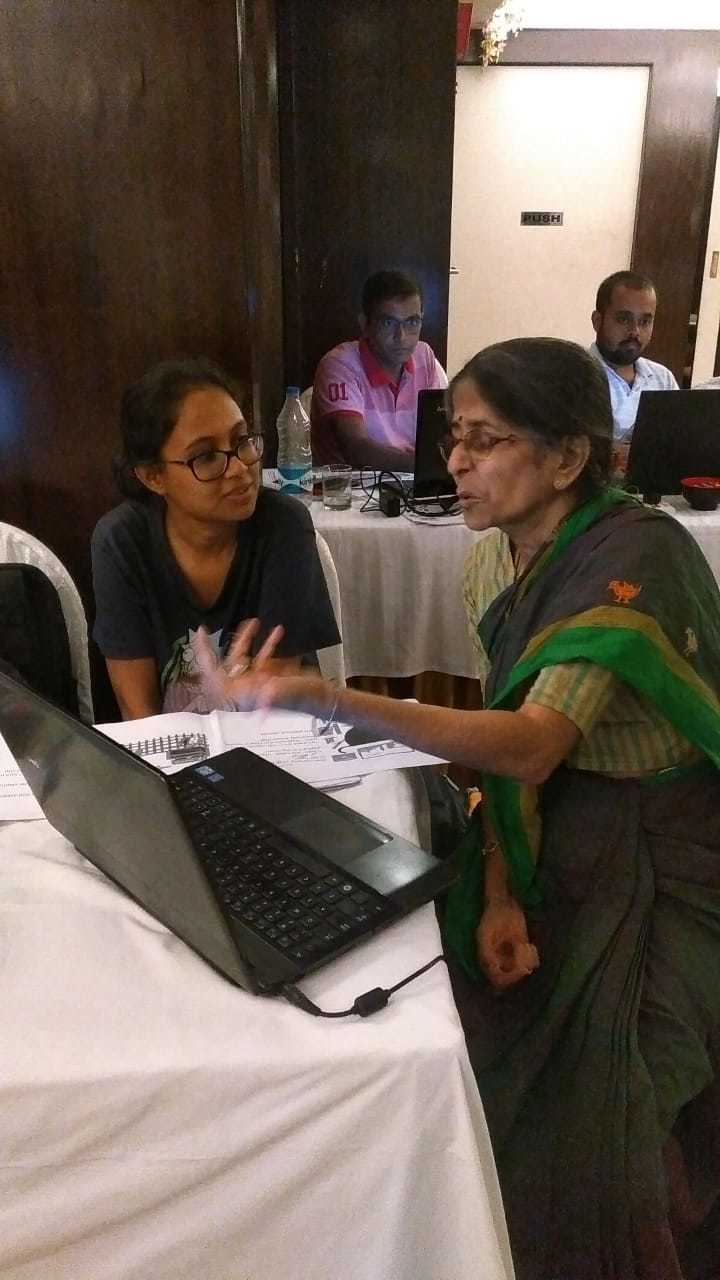
Mentoring and feedback
The next day, peer led review of stories lead to new words being included, some that were more soothing to the ear.
The hackathon was a lively space for discussion and debate: how to make translations child-friendly, keeping the words level-appropriate, importing cultural references (or not) while translating a story. This lead us to understand that a handy glossary of examples demonstrating Pratham Books’ editorial stance on translation for the last child would be helpful at our next hackathon.
It was also wonderful to see participants use robust local language keyboards which we documented to see if we could integrate the libraries into StoryWeaver.
“The workshop has provided a platform among teachers, students and translators to translate great stories in vernacular; now more children will access these stories.” Sudeshna Ma’am shared at the end of the workshop.
Participants left with plans to take StoryWeaver to their respective schools and we have already heard back from Subimal Pramanik, Assistant Primary Teacher of Swarupnagar North 24 pargonas about this.
“I have already started a new class where there is reading and learning with StoryWeaver. Students enjoyed the trial session very much and I have decided to continue with the sessions.”
We’re also very excited about a the StoryWeaver workshop that Suman Das will be conducting for 17 primary teachers from 12 schools in the Nadia district on 5th August.
Everything just came together so well over the weekend – the hunger for good stories, the energy of the language students, the wisdom of the teachers, their shared passion for Bangla. We can’t wait for our next hackathon!
You can read all the stories translated at the hackathon here.
Bhalo thakun!
comments (2)Mota Raja visits the classroom!
Posted by Remya Padmadas on December 05, 2017Zarif Hussain, is a first year student at the Symbiosis Law School, Noida. As part of his course he is doing an internship with Servants of the People’s Society that runs Balwadis for very young children from underserved communities across Delhi-NCR. Read on to find out how Zarif used StoryWeaver in his sessions with the children.
I was asked me to take interactive sessions with the children at Trilokpuri Balwadi and I currently conduct one-hour sessions everyday with the little kids on different topics like GK, math and health education. The children love to listen to the stories and they ask me bring a new story almost every day for them.
At first finding stories for them was a difficult so I asked my mom to help me out. She recommended Pratham Books’ Storyweaver platform where she translates stories to Surjapuri for children and uses them extensively in education centers in Kishanganj, Bihar.
I checked the StoryWeaver platform and found that it was simple and beautifully done with stories across reading levels in multiple languages. I downloaded stories from StoryWeaver and the first story I narrated was “Fat King, Thin Dog” in Hindi. During the session I realised that StoryWeaver was just what I needed. The children loved the story and did a drawing of the Mota Raja. One of the children Faizan recited the story back to the class. In fact, when I did a recap of the story after few days they all remembered the story so well.
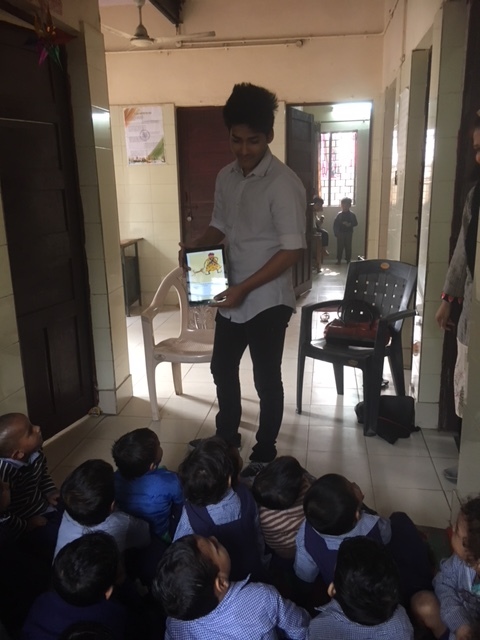
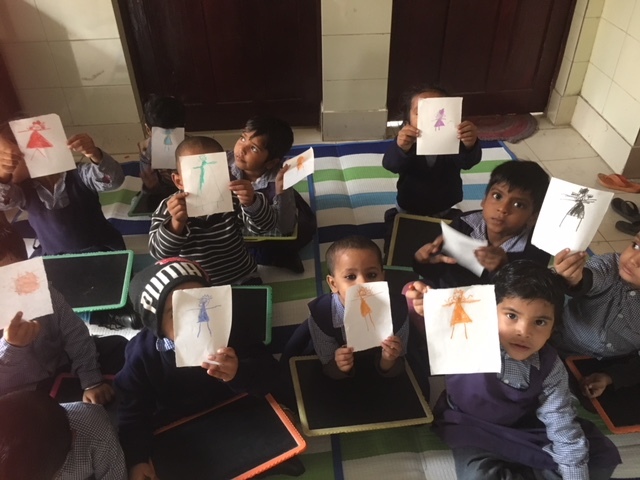
The next story we did was “Bunty aur Babli” which was about washing hands with soap with an emphasis on personal hygiene. The children learnt to wash their hands before eating food and after using toilet.
The most impressive thing I found about the stories on StoryWeaver was that they all had large, colorful pictures. The easy-to-use interface made it simple to download stories. I prepared activities for each story I narrated and that helped me retain the interest of the young children in class. Listening to the stories is the most enjoyable part of their day!
The stories on StoryWeaver are a great tool for teaching children. Thank you for making my sessions interactive and fun-filled with the children!
If you are using StoryWeaver in your classroom, library or after-school centre and would like to share your story on our blog write to [email protected]
Be the first to comment.StoryWeaver Spotlight: Aboli Chowdhary
Posted by Pallavi Kamath on June 09, 2020Aboli Chowdhary is a Spanish teacher and StoryWeaver Language Champion. She has translated over 30 books into Spanish. We reached out to her to come on board to build curated lists of Spanish resources that are particularly in need to keep children engaged, while they are away from school due to the ongoing pandemic. Aboli instantly agreed to help us. Read this piece by Aboli, where she shares her thoughts on translation and her experience using StoryWeaver’s Translate tool.
Hello, I am Aboli Chowdhary from Pune, India. I am a Spanish teacher and freelance Spanish translator. I love travelling. Although I was born and brought up in Mumbai, I got opportunities to live in cities like Bangalore and Vizag (Visakhapatnam).
Do tell us about your relationship with Spanish - what drew you to learning the language, and then teaching it?
My relationship with Spanish goes back to 2014, when I first started learning Spanish. I must mention here that it was by chance! After working in the demanding retail sector for a few years, I wanted to learn a new language, and Spanish seemed to be one of the languages of the future, considering there are almost 420 million Spanish speakers spread across 21 countries! After completing an advanced diploma in Spanish, I wanted to stay in touch with the language and practise it, so I started teaching.
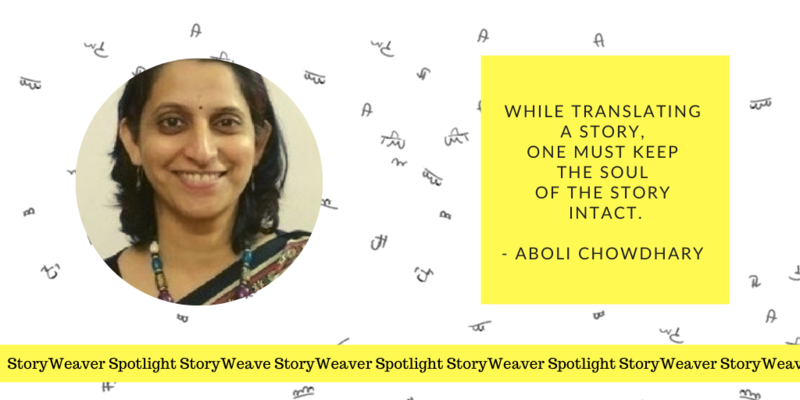
What is your experience of teaching children a foreign language and translating for children?
It’s fun teaching any foreign language to children! They are curious to learn not only the language but also its culture. And that, in my opinion can be best explored through stories.
One of the biggest challenges while translating a story is ‘keeping the soul of the story’ intact. One has to be very careful in choosing colloquial expressions, while at the same time promoting cultural exchange.
When you have been given a picture book to translate, what is your process, and how long does it usually take? How was the experience of translating on StoryWeaver?
My experience with StoryWeaver has been wonderful thanks to the friendly interaction with its members and their prompt technical support.
For translation, I generally re-read the story and try to understand its core values and message. The next step is to find the apt expression in Spanish and then translate. I found some of the stories like ‘Ammachi’s Amazing Machines’ challenging while translating the sound words into Spanish. But at the same time, while translating stories like, ‘The Rainbow Sambar’, I had to maintain the ‘Indian essence’ by using local language words with an explanation.
Luckily, the time taken to translate the stories got reduced due to the available translation draft. I used this feature on the StoryWeaver platform for translating several stories and made the necessary changes to the words and expressions.
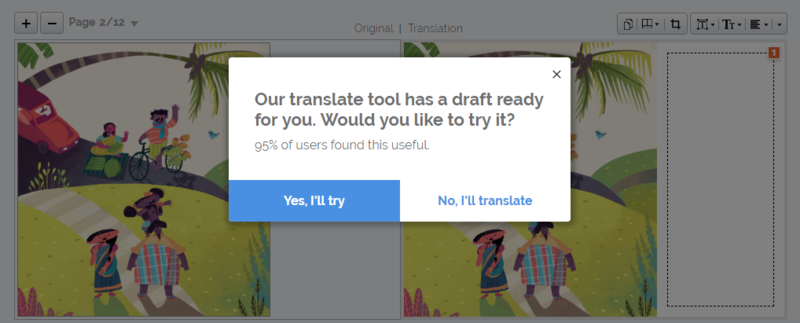
How do you approach translating the storybooks across varying Reading Levels?
Reading levels are based on the exposure to the language, rather than just age of the reader. Keeping this in mind, I use simple and easy words with occasional sound words for the earlier levels.
What are some of your favourite books from childhood? Is there any memorable reading experience that you would like to share?
I remember reading numerous ACK (Amar Chitra Katha) books in my childhood, especially on long train journeys! The language was simple with great illustrations!
We are so grateful for your contribution towards Spanish content on the platform, especially during these difficult times when there is such a need for children's reading material. Thank you for sharing the joy of reading in Spanish!
I believe that the potential of this platform is tremendous, especially since the COVID-19 outbreak. I strongly recommend reading books on this platform.I want to translate more stories into Spanish soon. So, ¡Nos vemos pronto! (See you soon!) :-)
Read the books translated by Aboli here.